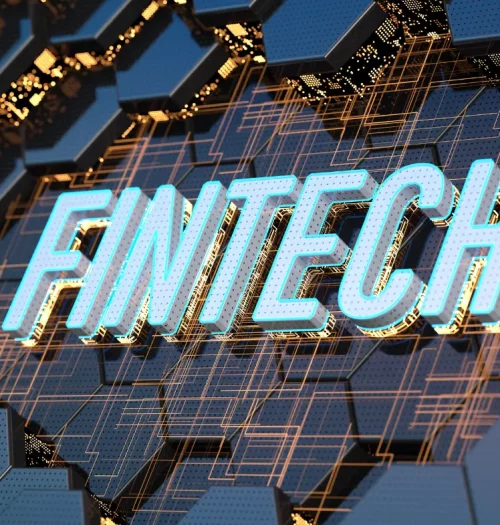Traditional Lending Company vs Fintech Lending Company In Australia’s Covid Season



Introduction
According to Global Fintech Index City Rankings 2020, which evaluates fintech ecosystems in more than 230 cities across 65 countries, Australia ranked number 8th on the list. In fact, Australia is slowly yet steadily building a globally competitive fintech industry, both locally and offshore. Australian FinTech revenue is expected to grow at a CAGR of 76.3% and exceed A$4 billion by 2020 due to reduced taxes on investments in start-ups, steady increase in mobile payments, and rise of tech-savvy digital natives.
Reports indicate that Australian FinTech sector comprises three market segments, i.e. digital payments, personal and business finance, financial infrastructure and data analysis in a balanced fashion. Each of these segments is disrupting the financial services sector thanks to the widespread development in digital technologies.
Traditional lending companies harbour strong existing relationships with their customers. Thus, established players still retain a chunk of consumer accounts across the spectrum of financial services. These traditional lenders leverage the convenience of in-person touchpoints at branch offices to solidify relationships with clients. Some traditional players are investing in their own digital transformation initiatives in a quest to position themselves in a better place, given the new digital era by investing in emerging technologies — such as mobility, artificial intelligence, machine learning, and big data analytics and much more. Still, their range of offerings, sudden increase in the number of customers, and uncatered pain points that clients experience are some of the leading contributors to their diminishing popularity in the Australian economy. While it is true that Australian FinTech is in the development stage of the business cycle, and the FinTech start-up space is multiplying, the traditional lending companies are left to suffer in the light of recent developments. That is why individuals must understand the differences between a traditional lending company and a Fintech lending company.
You May Also Like: Why Should You Use A Cloud-Based Loan Management Software?
Traditional Lending Company vs Fintech Lending Company In Australia
Customer Onboarding
It’s common knowledge that traditionally, lending remains a tedious process where customers approach banks either directly or through brokers to avail the loans. Moreover, the process of traditional customer boarding is primarily manual as well as paper-heavy. Not only does this make it time-consuming but also increases the chances of error due to the monotony of repeat processes or negligence. Consequently, traditional onboarding processes at lending companies facilitate a low rate of approval of loans.
On the other hand, fintech lending companies leverage state of the art technologies to overcome the vices of traditional lending systems when it comes to customer onboarding. It’s common for fintech lending companies to use multiple touchpoints like mobile apps and website forms to attract new customers, which increases the rates of loan applications. In this way, going digital when it comes to lending takes off geographical barriers. With the advent of Social media and Google Ads marketing
Fintechs reach out to a broader audience at a subsidised cost as compared to traditional lenders and thus end up serving a more extensive customer base. Further, the digitization of the onboarding process with the help of Fintechs makes it quick, simple and less error-prone.
Customer Engagements
Traditional players are far from customer-oriented solutions, which FinTechs propose. Moreover, traditional lending processes are so spreadsheet-centric and manual in nature, that data maintenance eats up most of the lending officer’s time, leaving none for customer engagement.
Modern businesses are all about what a customer wants. Thus, Fintech lending companies ensure processes that revolve around their customers. They strategically approach their target audience through the right medium and in a timely fashion. Moreover, the use of popular tools like CRM seamlessly manage customer data at Fintechs. Fintech lending companies prioritize 24/7 access, And even offer services available via non-traditional channels such as social media, empowering customers to a great extent. Moving forward, social media will serve as the primary medium to connect, engage, inform and understand customers as well as the place where customers research and compare banks’ offerings. Also, Fintech lending firms issue regular Email and SMS communication tools to notify the customers about details of loan origination without any delay. The use of avant-garde technologies like Chatbots (AI based Live Chat) play a definitive role in engaging the customers and supplying them with the required information without any need for human intervention.
Document Collection
Most traditional lending companies employ field officers who walk directly to the customer location and collect all the required documents for loan applications. Not only is this process of physical document collection very time consuming but also requires a large workforce at the lender’s edge to meet the growing loan demands of the economy.
Fintech lending companies, on the other hand, propagate the paperless approach to loan disbursal. They leverage robust document management tools to manage customer documents digitally. The digitization of the lending process allows borrowers to initiate loan application from any place at any given time almost instantly. Fintech promises a streamlined loan application process to their customers where they can enter data quickly, minimizing the chances of human errors by correcting data entries wherever necessary. Moreover, even the borrower’s validation documents can be scanned digitally, making the lending process a whole lot quicker and less confusing than it is traditionally. Real-time updates and notifications in the form of SMS or Email allow users to upload the other documents if missed or any additional documents required.
You May Also Like: 12 Factors To Be Considered before Choosing A Loan Management System
Bank Statement Analysis
While traditional lending companies analyze an applicant’s bank statements from past months and conduct manual verification, they make the process exceedingly time consuming and judgement error-prone. However, manual management and integration of bank statement data makes the loan decision making the process less than fool-proof. Although traditional lending companies do analyze an individual’s bank statement from the past, the manual assessment remains time-consuming, which ultimately lengthens the loan evaluation window.
Modern times require businesses to leverage the power of advanced analytics, along with big data to enhance their services and make profitable decisions. Since credit risks in the lending space like the failure of a borrower to make a repayment when it is due, partial loss of principal and loss of interest are so wide spread; efficient risk assessment is the need of the hour. Fintechs use machine learning algorithms for risk analytics to facilitate actionable insight from the massive amount of data generated from various sources for lending businesses. They evaluate risk in real-time and avoid costly delays with risk analytics thanks to big data. Equifax Basiq and illionBank statements provide an affordability report which tells us what’s the current asset and liabilities of a borrower by analyzing their bank statements. With the use of analytics, Fintechs can help lenders build measurement parameters to establish and examine likely risky scenarios when it comes to lending. Use of technology allows real-time portfolio monitoring and performance evaluation across key parameters to safeguard a lender’s assets. Thus, Finetech quickly identifies high-risk customers and reduces charge-off losses through critical screening.
Credit Bureau Reports
For a traditional lending company, credit bureau data is one the main tools of risk assessment. They take into account the data from the credit bureaus like Equifax and manually review the report.
On the other side, Fintech lending companies use intelligent API integration to fetch the credit bureau data with a single click from respective credit bureaus. They automatically fetch the data at the time of onboarding of the customer. Fintech lending companies then process the Equifax response and highlight the critical parameters like defaults, employer information in the past history and even calculate the Debt Burden Ratio automatically for a borrower. Fintech lending companies also rely on alternative credit scoring to access an applicant’s creditworthiness, thus making it possible even for people with zero credit history to secure loans. Because alternative credit score factors in unconventional figures like social media records, phone use, utility bill payments and even rental payments etc., it presents a more wholesome picture of an applicant’s ability to pay back a loan.
Underwriting
Traditional lending companies execute the underwriting of loans manually and depend on the efficiency of the Credit manager for its success. It’s fair to conclude that loan underwriting at a traditional lending company completely depends upon the individual skill and capability of the credit manager. Given the manual nature of loan underwriting process at traditional lending firms, the chances of error remain high. Additionally, it takes around 4 to 6 weeks of time to complete the process of underwriting stretching the loan origination window.
As opposed to this, Fintech lending companies use specific underwriting algorithms to analyse the different parameters like a place of residence, availability of government records, financial information, family members information, etc and provide the more specific score to the borrower. The self learning AI-based rule engine used by Fintechs keeps evolving analyzing data, learns from it, and improves further. So much so that the AI rule engine provides predictions at a scale and depth of detail impossible for a standard credit scoring model. What’s most profitable for a Fintech Lending company is the fact that underwriting is done within 24 hrs, cutting the loan origination window into a fraction of what it is at traditional lending companies.
You May Also Like: Lending Trends to Watch in 2020
Loan Contracts
Traditional lending institutions often send the files to the customers to get their signatures manually. They send a Field officer to visit the customers or call the customer requesting them to visit the lending institutions to sign the contract. This may lead to an unnecessary haul in the loan disbursal process.
Fintech lending companies leverages the innovation in technology with the use of Digital Signature for the purpose. Fintech companies automatically create the loan contract with their loan management system and get the e-sign from their customer in real time with 24/7 access. Various modern E-signing tools like DocuSign makes the process easier and faster than physical signature seeking.
Loan Disbursement
Post credit approval, traditional lending companies either do cash payment or upload the excel sheet to the bank portal and do the repayment process. However, it may take upto 3 business days to get the status on the disbursement from traditional lending companies.
Fintech lending companies on the other hand use the Bank API or Assembly Payments to directly disburse loans to its customers. Integration of payment gateway tools also play a major role for quicker disbursement at the lender’s end.
Direct Debit request
Traditional lending companies follow a highly regulated process for loan collection. Traditional lenders collect back the loan; however, there are always cases when debtors do not pay back on time. Then begins the tiresome process of sending ‘letters of demand’ to the debtor on the company’s letterhead, demanding them to pay off the debt by a particular date and threatening them of legal action in case of failure. There may be cases when traditional lending companies reach out to their clients via phone to get them on record to find out the reason for the default and delinquencies. In the traditional model of lending, the customer has to provide the manual request via email or directly approach lending institutions to initiate the direct debit process. The vast amount of manpower involved to maintain records and several repetitive functions with very little integration between them makes the traditional way of debt collection highly unsuccessful.
Fintech lending companies make it a point to analyze customers and their income bucket with their advanced analytics ahead of loan approval, reducing chances of NPAs. Some defaulters are indeed capable of paying back the loans if they are motivated appropriately and offered extended assistance. Fintechs use appropriate tools to accurately analyze borrowers and facilitate flexible payment arrangements. Through a borrower-centric approach, Fintech streamlines the operations and provides benefits to both collection officers and their debtors. They use robust internet networks and a centralized financial system, to auto-generate customer statements and payment notifications for customers via a comfortable medium such as SMS and emails. Most borrowers like to pay the debt off directly from their bank accounts. Unlike traditional lenders,Fintech can automatically send the request for DDR at the disbursement itself with the help of bank APIs. Fintech companies also integrate tools like Westpac Payway or Ezidebit to process the Direct debit process, so that they receive payment on time. Sometimes, Fintech also manages collection team assignments based on performance metrics and key performance indicators (KPIs).
Conclusion
In the end, it’s evident that the traditional lending industry can use innovations brought forth by the Fintech revolution to improve various functions like customer onboarding, data integration, loan origination, decision making and even debt collection. Leveraging the power of AI and ML algorithms, Fintechs adopt methodologies that help them serve their customers better and earn higher profits in return.
The Fintech revolution is here to stay, and it will continue to change the lending landscape as time passes. With significant excitement accumulating around fintech lending innovations, it’s crucial to stay up-to-date on what new developments occur. Only through keeping up with advancements made in financial technology, can a lending business take the fullest advantage of the benefits offered by it.
In Australia to be specific, the lending market has seen a significant preference shift from traditional lending companies to fintech companies providing alternative business lending. As a matter of fact, Fintech companies are changing the very landscape of lending by utilizing data and technology optimally. Fintechs support peer-to-peer lending, individuals can earn interest by lending to others. Further, Fintech lenders typically approve and fund loans almost instantly. They pull data from several different alternative sources in real-time to quickly determine how likely a borrower is to pay back the loan.
Moreover, Fintech lenders save money on overhead costs, such as personnel, rent, and administrative expenses. In the growing Australian FinTech market, new EFTPOS and online charging solutions will allow more merchants to be paid through credit cards, thus driving down the cost of receiving payments. More and more fintech lending companies are replacing the financial advice teams with Robo-Advice teams to cut labour costs in the long term. Even leveraging the blockchain tech will radically reduce costs by decentralizing ledgers for financial settlements.
CloudBankin caters innovative solutions that are a perfect mix of technology, competitive business edge and strategy. We hold a proven track record of happy clients and take pride in being the best technology partner for your organization. Just write to us to tell us about your requirement, and we’ll offer you the best possible solution. Get in touch now.
Related Post

5 Key Principles of Digital Lending for Banks and NBFCs
Brief History of Digital Lending: India has become the home

How FinTech Is Transforming Microfinance Institutions In Australia
Donna Cleeland from Australia was a single mother to three

The Future of Banking – Newer Solutions, Better Opportunities
The exponential growth of technological advancement has penetrated every industry
- Email: salesteam@cloudbankin.com
- Sales Enquiries: +91 9080996606
- HR Enquiries: +91 9080996576
